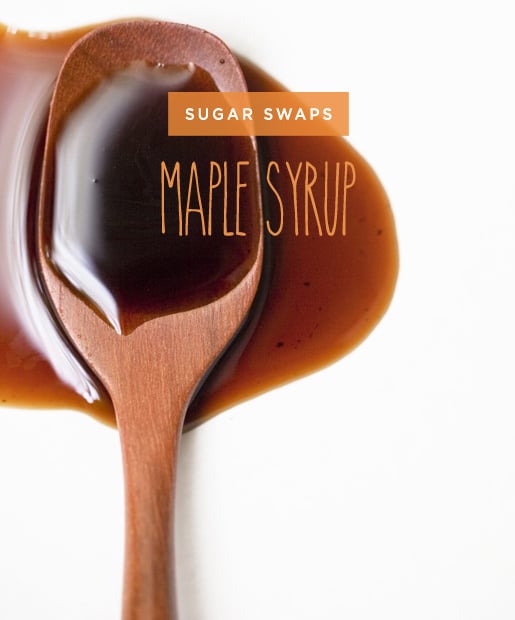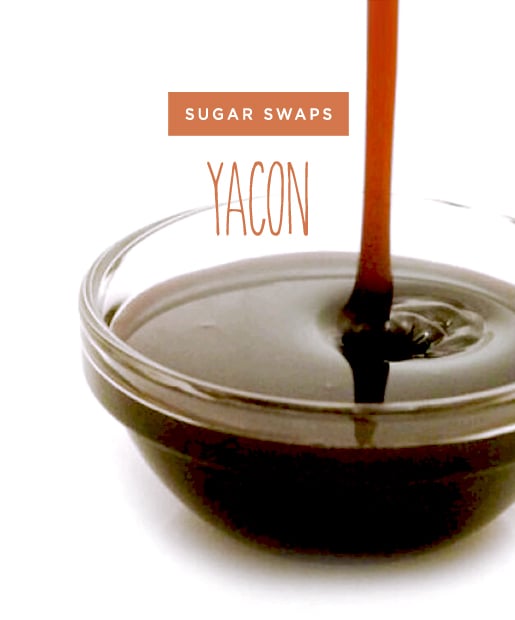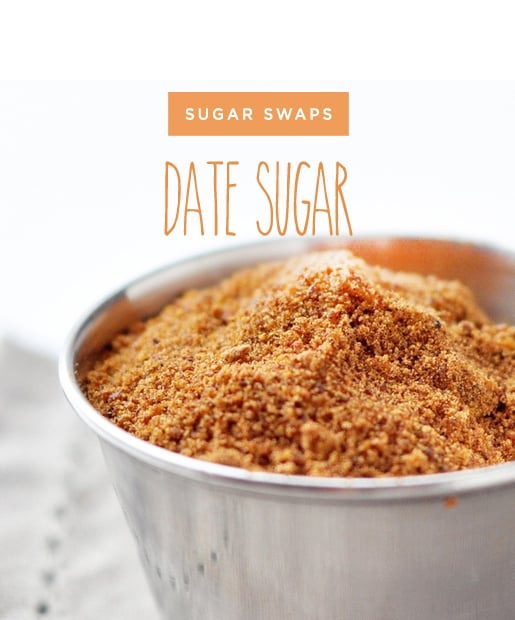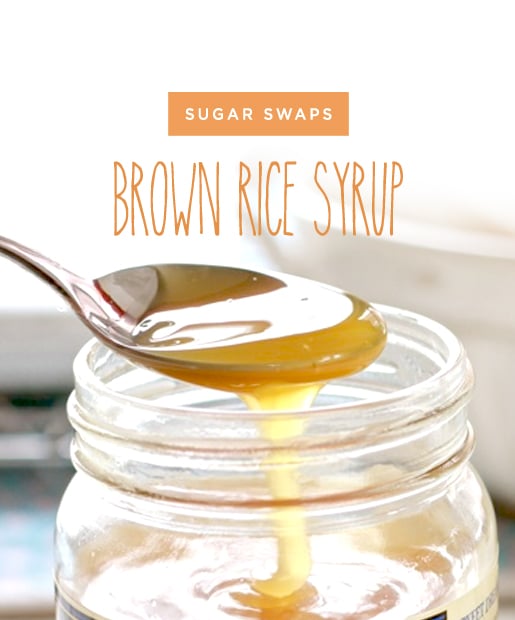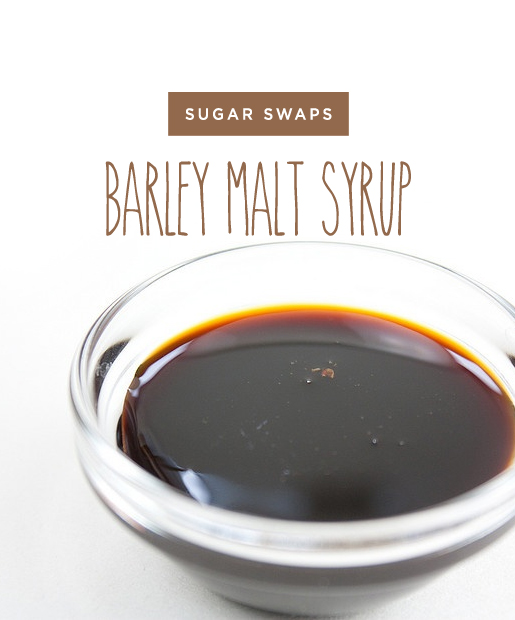Maple syrup isn't exactly the healthiest of sugar alternatives since it's still highly processed, but compared to white sugar, it does not trigger a blood glucose spike the way refined sugar does. The syrup is high in zinc and manganese. Calorie-wise it's comparable to sugar, but because of its sweeter taste, you only need to use 2/3 cup of maple syrup per 1 cup sugar. Be sure you're buying pure maple syrup, not anything that's been cut with high fructose corn syrup!
Form: Syrup
Uses: Sweeten smoothies, yogurt, oatmeal, and pancakes (duh). You can also substitute maple syrup in baking, but reduce the amount of liquids in the recipe to compensate. 3/4 cup maple syrup equals 1 cup sugar.
Glycemic Index: 58
Form: Syrup
Uses: Sweeten smoothies, yogurt, oatmeal, and pancakes (duh). You can also substitute maple syrup in baking, but reduce the amount of liquids in the recipe to compensate. 3/4 cup maple syrup equals 1 cup sugar.
Glycemic Index: 58
This sweetening agent is extracted from the yacon plant, a South American tuber. The syrup has half the calories of sugar and a high concentration of indigestible inulin, a complex sugar that breaks down slowly. It's also an excellent source of potassium, calcium, phosphorous, iron, 20 amino acids, and is considered a prebiotic that promotes healthy bacteria in your digestive system.
Form: Syrup
Uses: Sweeten smoothies, coffee, or tea. You can also use it in baking, adjusting properly for liquid levels, or drizzle over cereal and yogurt. It has a similar level of sweetness to agave, so substitute 2/3 cup yacon to 1 cup sugar.
Glycemic Index: 1
Form: Syrup
Uses: Sweeten smoothies, coffee, or tea. You can also use it in baking, adjusting properly for liquid levels, or drizzle over cereal and yogurt. It has a similar level of sweetness to agave, so substitute 2/3 cup yacon to 1 cup sugar.
Glycemic Index: 1
Date sugar is made from dehydrated, ground dates, so it retains the nutritional benefits of dates, and is not as processed as say, agave nectar or maple syrup. It looks and tastes like brown sugar, but slightly sweeter. The glycemic index on date sugar is in the moderate range, but since it isn't a refined or processed like sugar, most people consider it a healthier option. Also, be careful what recipes you use date sugar in -- it does not dissolve.
Form: Rough granules
Uses: Sweeten smoothies and hearty baked goods (breads, muffins, and brownies, not lighter cake). Sprinkle on top of oatmeal or cinnamon toast. The recommended substitution is 2/3 cup of date sugar to 1 cup white sugar.
Glycemic Index: 68
Form: Rough granules
Uses: Sweeten smoothies and hearty baked goods (breads, muffins, and brownies, not lighter cake). Sprinkle on top of oatmeal or cinnamon toast. The recommended substitution is 2/3 cup of date sugar to 1 cup white sugar.
Glycemic Index: 68
Brown rice syrup is made from boiled brown rice, and has a gooey consistency like thick honey. It's extremely sweet, and has a distinct, lightly butterscotch flavor. The syrup contains trace minerals of vitamin B, thiamin, niacin, vitamin B6 and vitamin K, but that doesn't mean it's completely healthy: This is another example of a sweetener that's a better option for you than refined sugar because it won't digest as rapidly, but it still contains as many calories.
Form: Syrup
Uses: Bake it into granola or granola bars, muffins, brownies, and breads, substituting 1 1/4 cup brown rice syrup for 1 cup sugar. The flavor is too overpowering for lighter desserts. You can also use it as you would maple syrup, on pancakes and oatmeal.
Glycemic Index: 25
Form: Syrup
Uses: Bake it into granola or granola bars, muffins, brownies, and breads, substituting 1 1/4 cup brown rice syrup for 1 cup sugar. The flavor is too overpowering for lighter desserts. You can also use it as you would maple syrup, on pancakes and oatmeal.
Glycemic Index: 25
This protein-rich and easily-digested syrup is similar in taste and texture to molasses, but is not as sweet as sugar or honey. Considered to be one of the healthiest sweeteners among natural foodies, it's made by soaking and sprouting barley to make malt, which is cooked down to a sweetener. It has a lower glycemic index than maple syrup and brown rice syrup, but has a healthy taste that is best paired with grains (and not your coffee).
Form: Syrup
Uses: Drizzle on cereal, pancakes, popcorns, and even roasted winter squash. Use in baking recipes for spice cakes, muffins, and whole grain and dark breads. When baking, you'll need to use 1 1/3 cups syrup to 1 cup sugar, but reduce the amount of liquids in the recipe.
Glycemic Index: 42
Form: Syrup
Uses: Drizzle on cereal, pancakes, popcorns, and even roasted winter squash. Use in baking recipes for spice cakes, muffins, and whole grain and dark breads. When baking, you'll need to use 1 1/3 cups syrup to 1 cup sugar, but reduce the amount of liquids in the recipe.
Glycemic Index: 42


